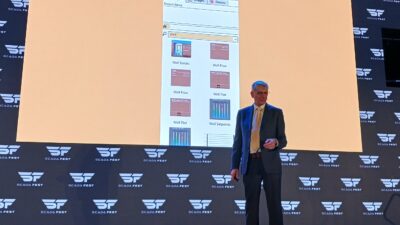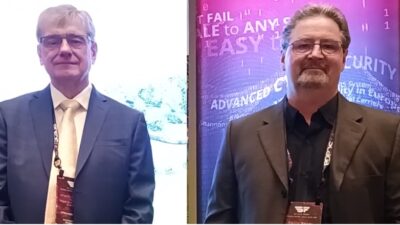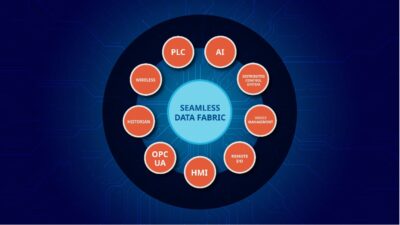Until May 2001, the residents of a small community west of Olympia, WA, used individual septic systems to handle their wastewater needs. Located at the southwestern edge of Puget Sound, houses and farms were spread over a sparsely populated area. With the addition of a 500-unit housing development and a new golf course, however, a switch to a centralized wastewater treatment facility to accommo...
Until May 2001, the residents of a small community west of Olympia, WA, used individual septic systems to handle their wastewater needs. Located at the southwestern edge of Puget Sound, houses and farms were spread over a sparsely populated area. With the addition of a 500-unit housing development and a new golf course, however, a switch to a centralized wastewater treatment facility to accommodate health standard guidelines was required. Engineers chose a sequencing batch reactor system to process the wastewater, but were faced with the dilemma of how to monitor and control levels at multiple wastewater collection sites spread out over many square miles, including the other side of a Puget Sound inlet.
The selected solution was a scalable station control system from Siemens Energy & Automation (Alpharetta, GA), Sinaut ST7, which automatically monitors and controls process stations connected through a wide area network. According to application engineer Kevin Moore, the heart of the operation is a series of Sinaut telemetry interface modules (TIMs) designed to automatically store information and communicate via phone line, buried twisted cable, radio, or microwave transmission.
‘The Sinuaut modules report by exception to a central computer located in the control room,’ Mr. Moore says. ‘Reporting only occurs when a change happens. As a result, there is less traffic on the system and the master computer is free to do other tasks. This is true for systems with five or 5,000 stations. And because the stations are spread out over such a wide area, it is important that data are available even if the central computer is not working.
‘The re-establishment of information and having all data stored in the TIMs is a big advantage as well,’ Mr. Moore continued. ‘Previous systems would lose all the data if a line was cut or disrupted. Plant operators can always count on historical data even in the worst situations.’
Level control, PLC, OI
The wastewater system controlled by the Sinaut system was designed with six collection wells/pump stations spread out over hundreds of square miles. The collection stations feed wastewater into a central reclamation facility.
The process begins when wastewater from homes is either pumped or gravity-fed into 15 x 8 ft collection wells at each station. The stations are equipped with a Sinaut module connected to a S7-300 PLC and a Siemens touchscreen operator interface (OI) terminal. After a collection well fills to a setpoint, an ultrasonic level control device communicates to the S7-300 PLC, controlling a pump that automatically drains the correct amount of wastewater into a conduit leading to the water reclamation facility. At the facility, wastewater is filtered through a 10-ft rotary screen, flowing through gates into one of two batch reactors to be treated. After the treatment, wastewater is decanted and fed through a rotating drum filtration system. The water then flows under banks of ultraviolet lights for further decontamination.
Reclaimed water is pumped into a pair of two-acre reservoirs, where it seeps back into the ground, ultimately filtering back to the water table. The sludge remaining in the batch reactors is pumped into a holding tank and processed to remove remaining bacteria, then removed by truck.
Information when needed
Mr. Moore says the TIMs at the pump stations are synchronized, enabling plant operators to plan time-critical operations from the master computer at the reclamation facility. Operators monitor information from the SCADA system computer screen, including high and low levels, alarms, seal leak, and other settings. They can activate pumps at the reclamation facility with a master PLC controlling two motor-control centers, as well as adjust level setpoints at each of the collection centers. ‘The system is very robust,’ Mr. Moore continues. ‘You can rip out a cable, and you won’t miss any messages. The system saves messages so when cable is reconnected information can be reclaimed.’
For more information, visit www.sea.siemens.com
-Dick Johnson, senior editor, [email protected]


